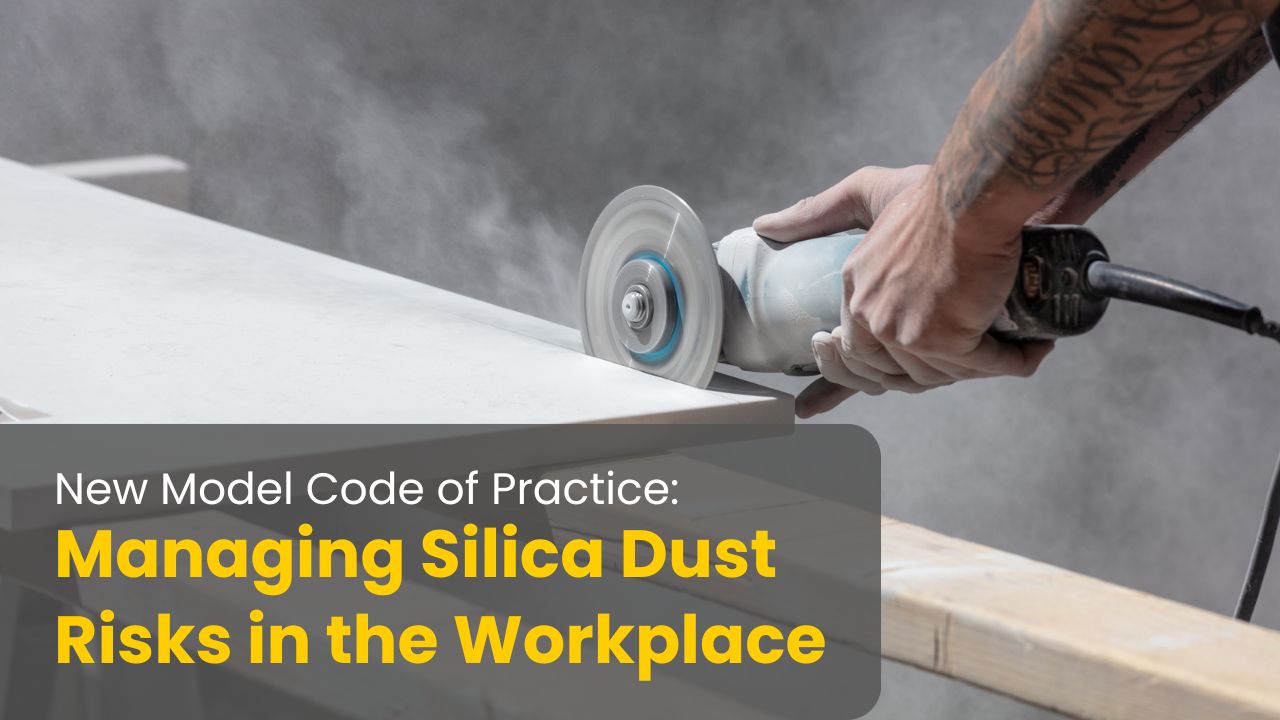
Safe Work Australia has released a new model Code of Practice to help businesses control the risks of silica dust in the workplace. Targeted at reducing harmful exposure to respirablecrystalline silica, this guidance aims to strengthen national efforts in protecting workers across high-risk industries such as construction, mining, and engineered stone fabrication.

The update comes at a crucial time, as growing evidence continues to link workplace exposure to silica with a range of severe and preventable health conditions. With increasing calls for WHS silica compliance, the new model Code provides essential tools and frameworks for reducing exposure and safeguarding workers.
Respirable crystalline silica, often referred to simply as silica dust, is a hazardous airborne contaminant released during tasks such as cutting, grinding, drilling, or polishing materials like concrete, tiles, bricks, and engineered stone. These particles are small enough to penetrate deep into the lungs and cannot be seen with the naked eye.
When inhaled over time, silica dust exposure can result in debilitating and life-threatening conditions, including:
Importantly, all silica-related diseases are preventable. With strong risk management systems and the right silica dust safety controls in place, exposure can be significantly reduced or eliminated.
The new Code of Practice for silica dust lays out clear, practical steps for employers and persons conducting a business or undertaking (PCBUs) to meet their obligations under WHS silica compliance regulations. These measures align with best practices in silica safety and reflect lessons learned from sectors where engineered stone silica exposure is prevalent.
Key recommendations include:
By following the model Code, businesses can establish safer work environments and reduce the long-term burden of occupational illness caused by silica dust in the workplace.
While Safe Work Australia creates model Codes, each jurisdiction must adopt the Code for it to have legal effect. This means businesses should check with their state or territory WHS regulator to confirm specific legal obligations.
Compliance with the Code may also support employers in meeting broader WHS duties under their respective legislation. Ensuring alignment with the Code's provisions is a key part of robust workplace exposure silica management strategies.
The release of this Code follows increased national scrutiny around the dangers of engineered stone silica, particularly within kitchen benchtop and construction industries. As noted in a previous Chemwatch blog on engineered stone, many of these products contain upwards of 90% crystalline silica, significantly increasing health risks during processing.
The updated Code reinforces the importance of silicosis prevention through early identification of hazards, consistent monitoring, and comprehensive worker education. Industry leaders, regulators, and businesses must now work together to ensure these new guidelines translate into real improvements in health and safety.
The new model Code of Practice for silica dust in the workplace represents a vital step forward in national efforts to reduce occupational diseases. It provides employers with actionable guidance for achieving compliance, protecting worker health, and embedding a culture of silica safety.
With increasing awareness of the risks posed by respirable crystalline silica, and support from Safe Work Australia and state regulators, businesses now have the resources to implement proactive, preventative measures. The focus is no longer just on compliance, it’s about creating lasting change that puts worker health first.
At Chemwatch, we’re committed to helping organisations manage hazardous substances with confidence and compliance. Our platform provides access to one of the world’s largest libraries of Safety Data Sheets (SDSs), as well as specialised tools for riskassessment, chemical inventory tracking, and WHS silica compliance, enabling businesses to identify hazards, implement controls, and meet the latest regulatory requirements. Contact Chemwatch today to see how we can empower your safety officers, compliance teams, and site managers to protect their workforce and maintain a safer, more accountable workplace.
Sources